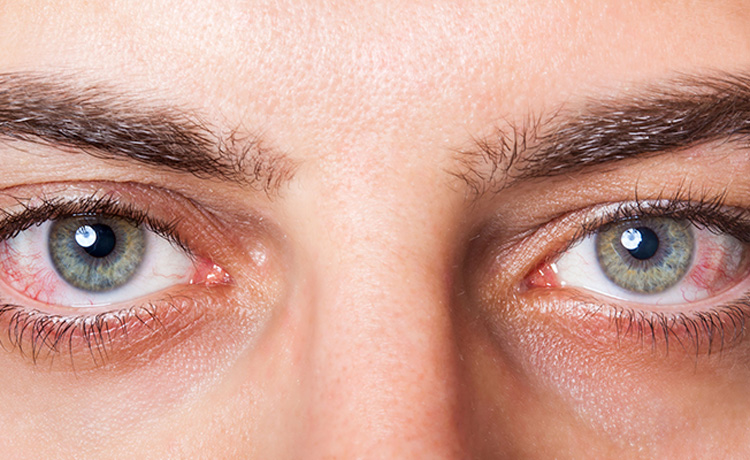Oftentimes, it starts with redness, burning, or itching in the eyes. Perhaps night vision is poor or contact lenses are uncomfortable. Eyes feel tired at the end of the day or vision fluctuates. Statistics reveal problems like these are common, and yet few sufferers ever seek treatment.
What many may not know is that these are symptoms of dry eye, which afflicts 30 to 50 million people in the United States and millions more across the world. It’s not something that’s caused in the US, around the globe people are looking to find out how dry eye is cured (or como se cura el ojo seco if you’re from Spain). Despite the commonality of the condition, only about one million people are receiving active treatment. And what an even fewer number may realize is that dry eye is actually a disease. And it’s often poorly diagnosed.
Dry Eye Disease, or Dry Eye Syndrome (DES), can significantly reduce an individual’s quality of life. For those who have had successful refractive surgery, the disease can even be dangerous. And yet, partially because awareness is low, many people suffer in silence, incorrectly assuming their symptoms and pain are just something they have to live with. In fact, it’s not uncommon for sufferers to mistakenly believe that artificial drops are the only treatment. The good news is that, for DES, there is a cure. Professionals who receive optician training are often made aware of this problem and know how to help people who are suffering from it. Contacting an eye care expert would be the prudent route to take if you are faced with this issue.
DES is characterized by a lack of moisture or lubrication in the eyes. Individuals who experience DES may notice redness, burning, itching, excessive tearing, eye tiredness, fluctuating vision, halos, grittiness, mucous or stringy discharge, poor night vision, light sensitivity or contact lens discomfort. Even watery eyes can be a symptom; sometimes the body produces an excess of tears to compensate for dry eyes.
As diverse as the symptoms of dry eye may be, so too are the causes. DES may be related to a lack of tear production, tear evaporation due to lack of oils, poor quality tears, infection, or inflammation. And there are a handful of factors that also cause or exacerbate dry eyes, including extended computer or phone screen time, allergies, or environmental conditions.
DES can affect anyone, and statistics reveal the number of people with dry eyes is growing. However, some people are at a higher risk for the condition. Those who use digital devices for more than two hours per day are age 40 or older, experience hormonal fluctuations, have medical conditions (diabetes, rheumatoid arthritis, thyroid disorders, or lupus), take medications (including birth control, blood pressure, antidepressants, and antihistamines) or have a family history of Meibomian Gland Dysfunction face increased susceptibility. If you suspect that you may have this, you will need to talk with a respected healthcare professional like those at this santa fe health clinic or a clinic that you can access closer to where you reside. Don’t suffer in silence, you should speak up on any issues you are worried about medically.
Relief from dry eyes begins with a visit to an eye care specialist and a dry eye test. During a consultation, patients can expect a symptom evaluation, testing of their tear film layers, an ocular allergy evaluation, and a Meibomian gland function test. Experienced eye care professionals are able to work with patients to properly diagnose the root cause of an individual patient’s disease and create a personalized treatment plan. Even if patients have previously tried lifestyle changes or over-the-counter drops and symptoms persisted, eye care specialists can offer several treatment options. And it’s highly recommended that refractive surgery patients seek professional care since the treatment of dry eye is imperative to improving surgical results.
Working to diagnose DES on an individual level, the specialists at MedEye Associates often learn their new patients have been incorrectly told in the past that dry eye does not have a cure or that surgery could make it worse. MedEye Associates specializes in identifying and treating DES before and after refractive surgery, correcting the disease, and improving the quality of vision and life for all patients.
MedEye Associates urges all patients to take eye education and care seriously. We invite all readers to take advantage of a completely free dry eye evaluation in one of many local offices and experience the meaning of “Better Vision, Better Life.” We invite you to call today at (305) 661-8588 for your free dry eye evaluation appointment with MedEye Associates. Since 1959, we are the number one specialist in eye care in South Florida. Call today! medeyeassociates.com










 Deering Estate
Deering Estate
 Massage Envy South Miami
Massage Envy South Miami
 Calla Blow Dry
Calla Blow Dry
 My Derma Clinic
My Derma Clinic
 Sushi Maki
Sushi Maki
 Sports Grill
Sports Grill
 The Healthy Kitchen
The Healthy Kitchen
 Golden Rule Seafood
Golden Rule Seafood
 Malanga Cuban Café
Malanga Cuban Café

 Kathleen Ballard
Kathleen Ballard
 Panter, Panter & Sampedro
Panter, Panter & Sampedro
 Vintage Liquors
Vintage Liquors
 The Dog from Ipanema
The Dog from Ipanema
 Rubinstein Family Chiropractic
Rubinstein Family Chiropractic
 Your Pet’s Best
Your Pet’s Best
 Indigo Republic
Indigo Republic




 ATR Luxury Homes
ATR Luxury Homes


 2112 Design Studio
2112 Design Studio
 Hamilton Fox & Company
Hamilton Fox & Company
 Creative Design Services
Creative Design Services
 Best Pest Professionals
Best Pest Professionals
 HD Tree Services
HD Tree Services
 Trinity Air Conditioning Company
Trinity Air Conditioning Company
 Cisca Construction & Development
Cisca Construction & Development
 Mosquito Joe
Mosquito Joe
 Cutler Bay Solar Solutions
Cutler Bay Solar Solutions


 Miami Royal Ballet & Dance
Miami Royal Ballet & Dance
 Christopher Columbus
Christopher Columbus
 Pineview Preschools
Pineview Preschools
 Westminster
Westminster
 Carrollton
Carrollton
 Lil’ Jungle
Lil’ Jungle
 Frost Science Museum
Frost Science Museum
 Palmer Trinity School
Palmer Trinity School
 South Florida Music
South Florida Music
 Pinecrest Orthodontics
Pinecrest Orthodontics
 Dr. Bob Pediatric Dentist
Dr. Bob Pediatric Dentist
 d.pediatrics
d.pediatrics
 South Miami Women’s Health
South Miami Women’s Health

 The Spot Barbershop
The Spot Barbershop
 My Derma Clinic
My Derma Clinic




 Miami Dance Project
Miami Dance Project

 Rubinstein Family Chiropractic
Rubinstein Family Chiropractic
 Indigo Republic
Indigo Republic

 Safes Universe
Safes Universe
 Vintage Liquors
Vintage Liquors
 Evenings Delight
Evenings Delight





 Atchana’s Homegrown Thai
Atchana’s Homegrown Thai
 Baptist Health South Florida
Baptist Health South Florida

 Laser Eye Center of Miami
Laser Eye Center of Miami
 Visiting Angels
Visiting Angels
 OpusCare of South Florida
OpusCare of South Florida

 Your Pet’s Best
Your Pet’s Best





 HD Tree Services
HD Tree Services
 Hamilton Fox & Company
Hamilton Fox & Company


 Creative Design Services
Creative Design Services